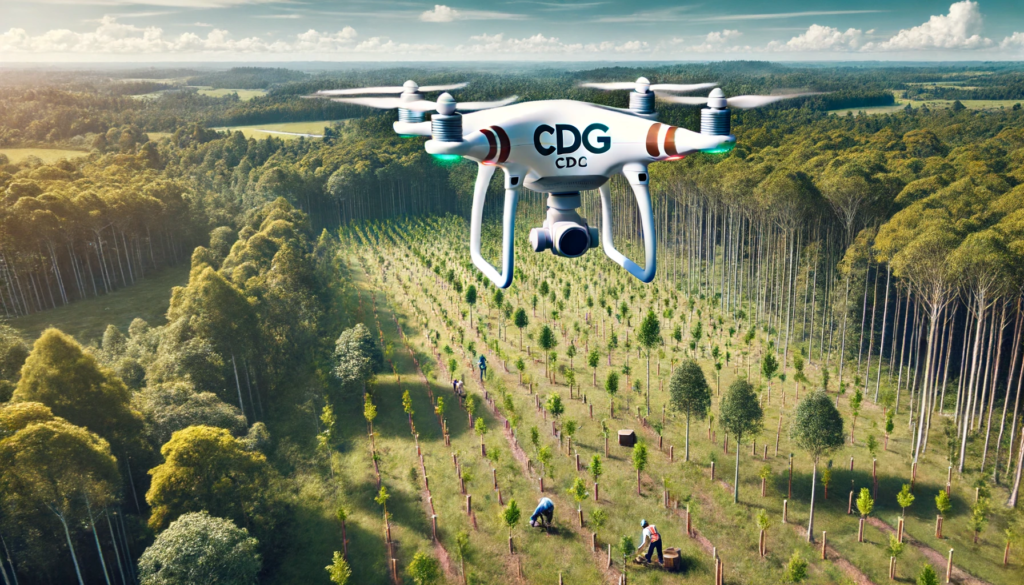Introduction
In the era of rapid technological advancement, the integration of drones into environmental conservation practices represents a transformative shift. At CDG, we are at the forefront of utilizing drone technology to enhance habitat restoration projects. Our drone-assisted Habitat Restoration Monitoring service exemplifies our commitment to innovative conservation solutions that are efficient, thorough, and minimally invasive.
The Need for Advanced Habitat Restoration Monitoring
Habitat restoration is a critical component in the conservation of biodiversity, stabilization of ecosystems, and reversal of environmental degradation. Traditional monitoring methods often involve manual surveying and data collection, which can be time-consuming, costly, and sometimes ineffective in capturing the full scope of an area’s ecological recovery.
Drone technology revolutionizes this process by providing high-resolution imagery, real-time data collection, and the ability to access remote or challenging terrains without significant human disturbance. This high-tech approach not only enhances the accuracy of the data collected but also ensures comprehensive monitoring over expansive areas.
The Role of Drones in Habitat Restoration
Comprehensive Area Coverage
Drones equipped with advanced imaging technologies, including high-definition cameras and multispectral sensors, can cover vast areas much faster than ground-based teams. This allows for frequent and comprehensive monitoring of restoration sites, ensuring that every change in the ecosystem is accurately documented and analyzed.
Detailed Data Collection
Our drones capture a variety of data types that are crucial for effective habitat restoration monitoring. High-resolution photographs, thermal images, and 3D mappings are just a few examples of the data that can be gathered. These datasets help in identifying plant species, monitoring wildlife presence, and detecting changes in water bodies and soil conditions.
Minimal Environmental Impact
One of the significant advantages of using drones is the minimal impact they have on the habitats being restored. Unlike human presence, drones do not disturb the soil or vegetation and pose no threat to wildlife. This non-invasive method allows for genuine natural processes to occur, providing more accurate data on the ecosystem’s recovery.
Case Studies: Success Stories from CDG’s Drone Monitoring
At CDG, we have leveraged drone technology in multiple projects to assist in the monitoring and evaluation of habitat restoration efforts. Here are a couple of case studies that highlight the effectiveness and efficiency of our drone habitat restoration monitoring services:
Wetland Restoration in Coastal Regions
In one of our projects, we monitored a wetland restoration effort on a coastal area impacted by industrial pollution. Our drones were deployed to track the re-establishment of native plant species and the return of wildlife species to the area. Through regular drone surveys, we provided the restoration team with valuable data that helped them adjust their strategies in real-time, ensuring a successful restoration outcome.
Forest Regeneration after Wildfires
Following a devastating wildfire, we assisted a national park in monitoring the regeneration of forest areas. Our drones systematically captured the gradual regrowth of vegetation, helping ecologists understand the pace and spread of species regeneration. This data was crucial in assessing the effectiveness of the seeding efforts undertaken and planning further intervention strategies.
Enhancing Public Engagement and Education
Beyond the technical benefits, our drone services also play a vital role in enhancing public engagement and education. By sharing the aerial footage and data visualizations we collect, we help increase public awareness about the importance of habitat restoration. These visual stories can be powerful tools in garnering support and understanding from the community, stakeholders, and policymakers.
Conclusion
The integration of drone technology into habitat restoration monitoring marks a significant leap forward in conservation efforts. At CDG, our drone services are designed to deliver precise, efficient, and impactful data that drives successful restoration projects. As we continue to explore and expand the capabilities of this technology, we remain committed to advancing environmental conservation in more innovative and effective ways.
